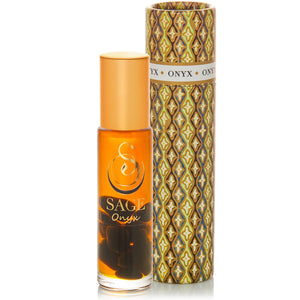The realm of perfumes is as vast and intricate as the world of fine art, with every fragrance offering a unique sensory experience. I will unravel the mysteries behind some of the most commonly asked questions about Perfumes. We'll explore what perfume notes are and how they form the building blocks of every scent. We'll delve into the concept of fragrance families, helping you understand how different scents are categorized and what makes each family unique. Additionally, I'll clarify the differences between Eau de Toilettes and Perfume Oils, providing insights into their varying concentrations and longevity. Lastly, I’ll uncover the reasons behind the diverse colors of perfumes, shedding light on what influences these vibrant hues. Join me on this olfactory journey to deepen your understanding and appreciation of the captivating world of fragrances.
What is a Fragrance Note?
In the world of perfumery, fragrances are comprised of various layers that unfold over time, creating a complex and evolving scent experience. These layers are categorized into three main types of notes: top notes, middle notes (also known as heart notes), and base notes. Each group of notes plays a distinct role in the fragrance composition.
Top Notes
-
Definition: Top notes are the initial scents that you detect immediately upon applying a fragrance. They are usually the lightest and evaporate quickly.
-
Role: They provide the first impression of a fragrance and are crucial in attracting initial interest, but they fade away after a short period, usually within a few minutes to an hour.
-
Common Examples: Citrus (lemon, orange), light fruits (grapefruit, berries), and herbs (lavender, sage).
Middle Notes (Heart Notes)
-
Definition: Following the top notes, the middle notes emerge as the main body of the scent. They are more mellow and generally last longer than top notes.
-
Role: Middle notes are considered the heart of the fragrance, giving it body, and masking the often misunderstood initial impressions of base notes that become more pleasant over time.
-
Common Examples: Floral (rose, jasmine), spices (cinnamon, cardamom), and fruits (Mango, Fig).
Base Notes
-
Definition: Base notes are the last to develop and the longest-lasting elements of a fragrance. They provide depth and solidity to the perfume.
-
Role: These notes ground the fragrance, lingering on the skin for hours after the top notes have evaporated. They are often rich and deep.
-
Common Examples: Woods (sandalwood, rosewood), resins (amber, myrrh), and musk.
Understanding fragrance notes is crucial for appreciating the complexity and craftsmanship of perfumes. Each note plays its part in the symphony of scents, contributing to the unique character and longevity of the fragrance. Whether you're selecting a new perfume or simply curious about the components of your signature scent, the knowledge of perfume notes can enhance your appreciation for the art of perfumery.
What is a Fragrance Family?
A Fragrance Family categorizes perfumes based on their dominant scent characteristics and ingredients, facilitating the identification and description of fragrances. Let's look at the primary fragrance families:
1. Floral (Shop my Floral or Marine Fragrances)
-
Characteristics: This family is one of the most popular and diverse, characterized by the scent of flowers. It ranges from single flower aromas to complex compositions of various floral notes.
-
Sub-Families: Includes Floral Fruity, Soft Floral, and Floral Green.
2. Warm (Shop my Earthy or Fruity Fragrances)
-
Characteristics: Known for warm, sweet, and sometimes spicy notes. Common ingredients include amber, vanilla, incense, exotic flowers, and spices.
-
Sub-Families: Features variations like Soft Amber, Amber Floral, and Amber Woody.
3. Woody(Shop my Subtle and Earthy Fragrances)
-
Characteristics: Features warm and dry notes reminiscent of woods and forests. Common notes include sandalwood, cedar, vetiver, and patchouli.
-
Sub-Families: Includes Mossy Woods, Dry Woods, Aquatic Woody, and Aromatic Woody.
4. Fresh( Shop My Fresh, Marine or Fruity Fragrances)
-
Characteristics: Known for light, uplifting, and clean scents, featuring citrus, herbal, aquatic, and green notes.
-
Sub-Families: Encompasses Citrus, Green, Water, and Fruity categories.
5. Gourmand( Shop my Subtle or Earthy Fragrances)
-
Characteristics: Showcases edible or dessert-like qualities, with sweet notes such as vanilla, chocolate, caramel, and confections.
-
Sub-Families: Often overlaps with Amber and Fruity categories due to their sweet, rich qualities.
Understanding Fragrance Families helps in articulating scent preferences and discovering new fragrances that align with individual tastes. This classification system offers a foundational language in the world of perfumery, guiding enthusiasts through the diverse and rich landscape of scents.

What is the Difference Between Eau de Toilettes and Perfume Oil Concentrates?
Eau de Toilette sprays and Perfume Oil concentrates differ primarily in their concentration of fragrance and essential oils, application methods, and longevity on the skin. Eau de Toilette sprays have a lower concentration of fragrance oils, typically ranging from 5% to 15%, mixed with alcohol and water, making them a bit lighter on the skin. In contrast, my perfume oils are far more concentrated and have no alcohol content, providing a richer and more long-lasting scent. Perfume oils are applied directly to the skin, usually at pulse points, where they interact with body heat to release their aroma slowly. Due to their alcohol content, Eau de Toilette sprays evaporate faster, requiring more frequent application than the more enduring perfume oil concentrates. Shop my Perfume Oil Concentrates . Shop my Organic Eau de Toilettes.
Why Are Perfumes Different Colors?
When exploring the world of fragrances, one might notice the vast array of colors perfumes come in, ranging from clear to deep amber. The color of a perfume can be attributed to several factors. Let's delve into the reasons behind the diverse color palette of perfumes.
-
Essential Oils and Extracts: The heart of any perfume is its blend of essential oils and extracts derived from flowers, herbs, fruits, and woods. These natural ingredients inherently have their own colors, which can influence the final color of the perfume. For example, vanilla often imparts a golden hue, while certain woods and resins can result in darker shades.
-
Aging Process: Much like fine wine, some perfumes are aged to develop depth and complexity in their scent profiles. This aging process can also affect the color, often deepening it over time.
The colors of perfumes are a blend of art and science, reflecting the natural characteristics of their ingredients, the influence of manufacturing processes, and the strategic choices of the brand. Whether a perfume is clear, golden, or a deep amber, each color tells a part of the fragrance's story, from its ingredients and creation process to its intended sensory impact. Understanding the reasons behind perfume colors can enhance the appreciation of these complex and beautiful creations.
Understanding Fragrances and Deepening Your Appreciation of the Art of Perfume
As we conclude our exploration of the captivating world of fragrances, it’s clear that understanding the nuances of fragrance notes, families, and product types can greatly enhance your appreciation and selection of perfumes. By grasping the concept of fragrance notes, you can better understand the intricate layers that compose your favorite scents. Recognizing the distinct fragrance families allows you to identify and discover new scents that align with your preferences. Differentiating between Eau de Toilettes and perfume oils equips you with the knowledge to choose a product that suits your desired intensity and longevity. Lastly, understanding why perfumes come in different colors adds another layer of appreciation for the artistry behind these products. With this knowledge, you are now better prepared to navigate the fragrant landscape with confidence and curiosity, ensuring that each scent you choose is a true reflection of your individual style. To get started on your fragrance journey visit my fragrance guide and take my perfume quiz.

























